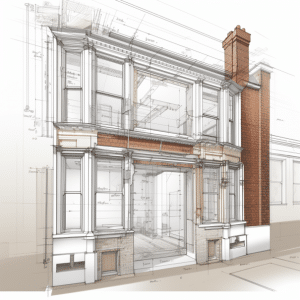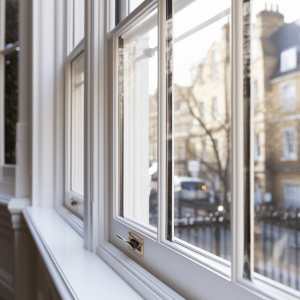Ventrolla: The Preferred Choice for Discerning Specifiers in Window Renovation
What or Who are Specifiers?
Specifiers, in the context of architecture and construction, refer to professionals who play a crucial role in selecting and specifying materials, products, and systems for building projects. These individuals are typically architects, designers, or engineers who work on a project and are responsible for making informed decisions regarding the materials and components that will be used in the construction or renovation of a building. The specifier’s choices are influenced by various factors, including design requirements, performance criteria, budget constraints, and building regulations.
Key roles and responsibilities of specifiers include:
-
Material Selection:
Specifiers are responsible for choosing the appropriate materials for different aspects of a building, such as flooring, roofing, windows, doors, and more. This involves considering factors like durability, aesthetics, sustainability, and compliance with building codes.
-
Product Specification:
Specifiers create detailed specifications that outline the standards and requirements for each product or material to be used in the construction project. This documentation is essential for contractors and ensures that the project is executed according to the intended design and performance criteria.
-
Planning Compliance:
Specifiers must be well-versed in planning laws and building regulations. They ensure that all selected materials and systems meet the required safety and regulatory standards. This includes considerations for fire safety, accessibility, energy efficiency, and structural integrity.
-
Budget Management:
Specifiers work within project budgets, considering the cost of materials and products. They must balance the desire for high-quality and durable materials with the financial constraints of the project.
-
Coordination with Stakeholders:
Specifiers collaborate with architects, engineers, contractors, and clients to understand project requirements and constraints. Effective communication with various stakeholders is crucial to ensuring that the selected materials align with the overall design and functionality goals.
-
Stay Informed about Industry Trends:
Specifiers stay abreast of industry developments, new technologies, and emerging trends in construction and design. This knowledge enables them to make informed decisions and recommend innovative solutions to enhance the overall quality of the project.
Specifiers act as a bridge between design concepts and the practical execution of construction projects. Their expertise is essential in creating buildings that meet aesthetic, functional, and regulatory requirements while considering factors such as sustainability and cost-effectiveness.

Timber Window Specifications: Choosing Quality and Performance
Timber windows add timeless elegance and warmth to any architectural design, providing a natural and aesthetically pleasing alternative to other materials. When specifying timber windows for your project, it’s essential to consider various factors to ensure not only a visually appealing outcome but also optimal performance and longevity. We’ll explore key timber window specification keywords to help you make informed decisions.
1. Timber Material:
The choice of timber species plays a pivotal role in the durability and aesthetics of your windows. Whether you opt for the rich tones of oak, the versatility of pine, or the luxurious appeal of mahogany, understanding the characteristics of each timber type is crucial.
Pro Tip: Consider specifying sustainably sourced timber and look for responsibly sourced certifications to ensure responsible forestry practices.
2. Construction:
Understanding the construction details of your timber windows is vital for functionality and style. Specify the frame type, whether it’s a classic casement, a space-saving sliding design, or an awning window for increased ventilation. Pay attention to joinery techniques, such as mortise and tenon joints, which contribute to the window’s strength and durability. Additionally, choose a glazing bar configuration that complements the architectural style.
3. Dimensions:
Accurate dimensions are key to the seamless integration of timber windows into your project. Specify the frame size, taking into account the height, width, and thickness. Clearly outline the dimensions of the sashes for an optimal fit within the overall design.
Pro Tip: Consider the sightlines and proportions to maintain visual harmony with the surrounding elements.
4. Performance:
Timber windows can be energy-efficient and weather-resistant when specified correctly. Specify the U-value, indicating the window’s thermal performance. Look for a weather rating that ensures resistance to wind, rain, and other environmental elements. Additionally, consider the air infiltration rating to enhance energy efficiency and occupant comfort.
5. Glazing:
The glazing choice significantly impacts the overall performance of timber windows. Specify the type of glass, such as single, double, or triple glazing, based on insulation needs. Explore the benefits of low-emissivity (Low-E) coatings to enhance energy efficiency and reduce heat transfer.
6. Hardware:
Pay attention to the hardware details for both functionality and aesthetics. Specify handles and latches that complement the overall design, and choose durable hinges that ensure smooth operation over time.
7. Installation:
Clearly outline the revealed depth to ensure proper installation within the wall structure. Specify the installation method, whether flush or surface-mounted, to achieve the desired visual effect.
8. Certifications and Standards:
Ensure the timber windows meet industry standards and certifications. Look for the BSI (British Standards Institution) seal and consider responsibly sourced certifications for environmentally conscious choices.
9. Maintenance:
Specify any specific maintenance requirements to ensure the longevity of your timber windows. Regular upkeep, such as sealing and finishing, can preserve the natural beauty of the timber and extend the lifespan of the windows.
In conclusion, specifying timber windows involves a thoughtful consideration of various factors to achieve a harmonious blend of aesthetics, functionality, and sustainability. By carefully using these timber window specification keywords, you can navigate the selection process with confidence, ensuring that your chosen windows not only enhance the architectural beauty of your project but also stand the test of time.

Ventrolla in the Specifier Community
In the ever-evolving world of architectural design and renovation, specifiers are tasked with making crucial decisions that impact not only the aesthetics of a building but also its functionality and efficiency. When it comes to window renovation, one name stands out as the top choice for discerning specifiers: Ventrolla. Here, we explore the reasons behind the widespread preference for Ventrolla in the specifier community.
-
Heritage and Expertise:
Ventrolla boasts a rich heritage in the field of window renovation, with a track record that spans decades. Their commitment to preserving the authenticity of historical windows while enhancing their performance sets them apart. Specifiers appreciate the company’s deep understanding of architectural history coupled with modern expertise, ensuring that each project aligns seamlessly with the original design intent.
-
Bespoke Solutions:
One size does not fit all in the specifier’s world, and Ventrolla understands this well. Their commitment to delivering bespoke solutions tailored to the unique requirements of each project is a key factor in their popularity. Whether the goal is to maintain historical accuracy or integrate modern energy-efficient technologies, Ventrolla collaborates closely with specifiers to achieve the desired outcomes.
-
Quality Craftsmanship:
Ventrolla is synonymous with quality craftsmanship. Specifiers choose Ventrolla for their attention to detail, precision, and use of high-quality materials. The company’s skilled craftsmen are dedicated to producing windows that not only look stunning but also stand the test of time. The combination of traditional craftsmanship and modern techniques ensures that Ventrolla windows exceed industry standards.
-
Energy Efficiency and Sustainability:
In an era where sustainability is a top priority, Ventrolla has earned accolades for its commitment to energy efficiency. Specifiers appreciate the incorporation of advanced technologies that improve insulation, reduce energy consumption, and contribute to overall environmental sustainability. Ventrolla’s dedication to green practices aligns seamlessly with the evolving priorities of modern architecture.
-
Comprehensive Services:
Specifiers often face the challenge of coordinating multiple aspects of a renovation project. Ventrolla simplifies this process by offering comprehensive services that encompass everything from initial consultations and surveys to installation and aftercare. This holistic approach streamlines the specifier’s role, allowing them to confidently entrust the entire window renovation process to Ventrolla.
Easy Access to Ventrolla Products and Services
It can’t be denied that specification is an essential part of successful construction project design. A poorly written specification can literally make or break period renovation projects, whereas a well-written specification can enhance project delivery and save your client money too.
NBS Plus and RIBA Product Selector
NBS Source stands out as an advanced platform that streamlines project workflows for users seeking efficient product and manufacturer selection. Through its robust search functionality, users can effortlessly identify products and manufacturers that precisely meet their project needs. The platform facilitates swift decision-making by offering structured properties, values, and technical information, complemented by innovative product comparison features. Users can seamlessly integrate chosen products into project specifications and generate 3D models via NBS Chorus and Autodesk® Revit® integrations. Alternatively, product information can be downloaded for future reference. NBS Source, as a third-party observer, significantly enhances efficiency and precision in project management by simplifying the processes of finding, selecting, and specifying products.
Allowing you to clearly define your project intent, costs, dimensions, performance, and construction, Ventrolla product specifications are available on
NBS Plus and RIBA Product Selector.
Ventrolla the Specifier’s Partner
Ventrolla’s prominence among specifiers in the realm of window renovation is no coincidence. It is a testament to the company’s unwavering commitment to excellence, heritage preservation, and sustainability. As specifiers continue to seek partners that share their passion for quality and innovation, Ventrolla remains a trusted choice, leaving an indelible mark on the windows of both historical landmarks and contemporary structures alike.
